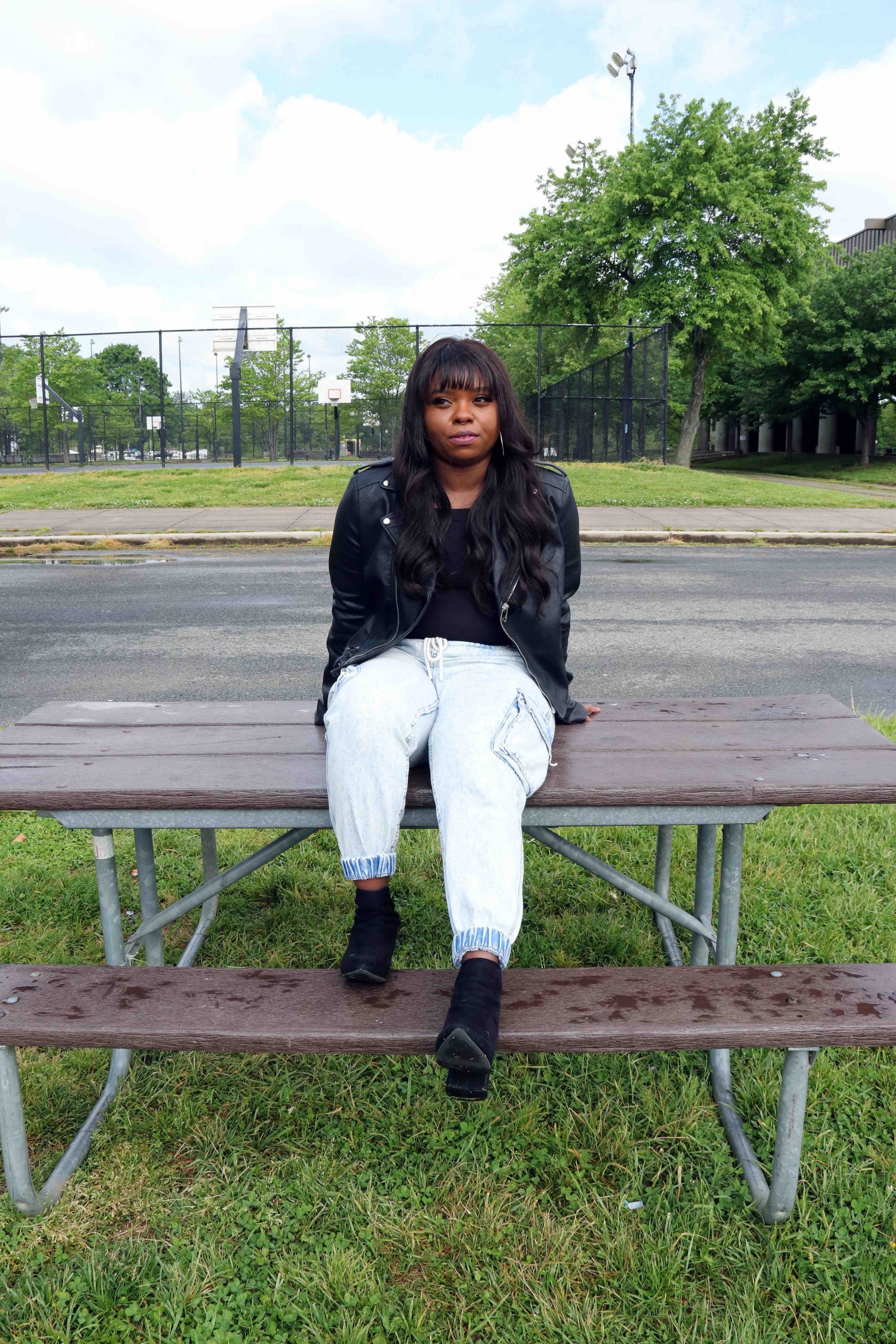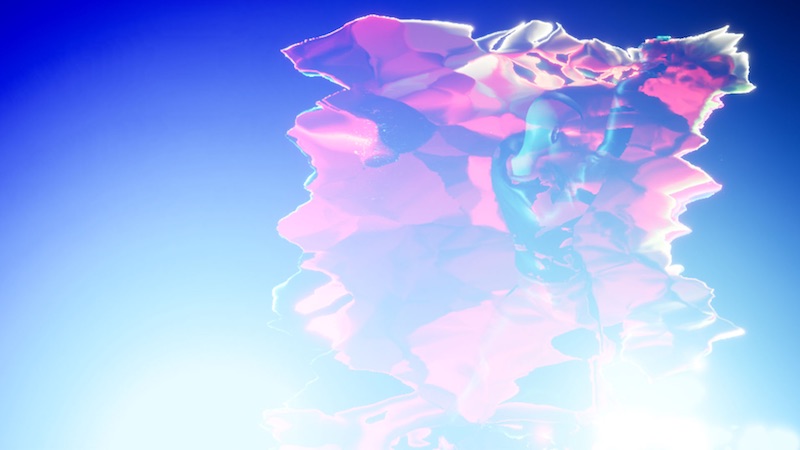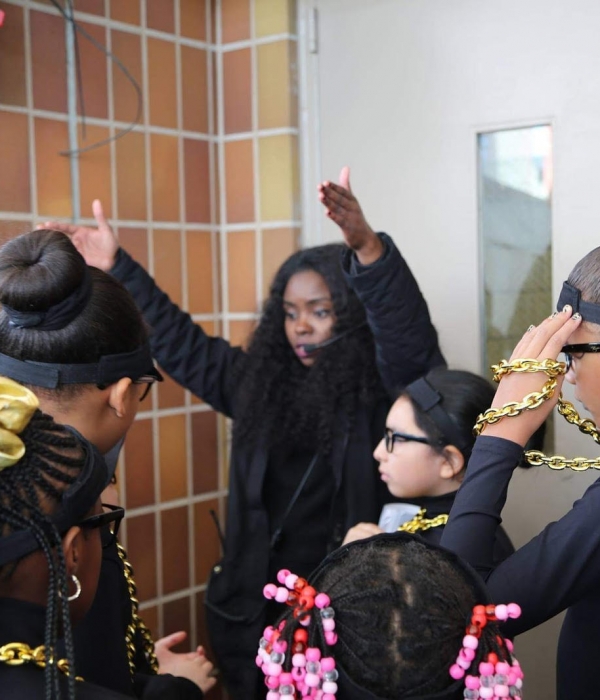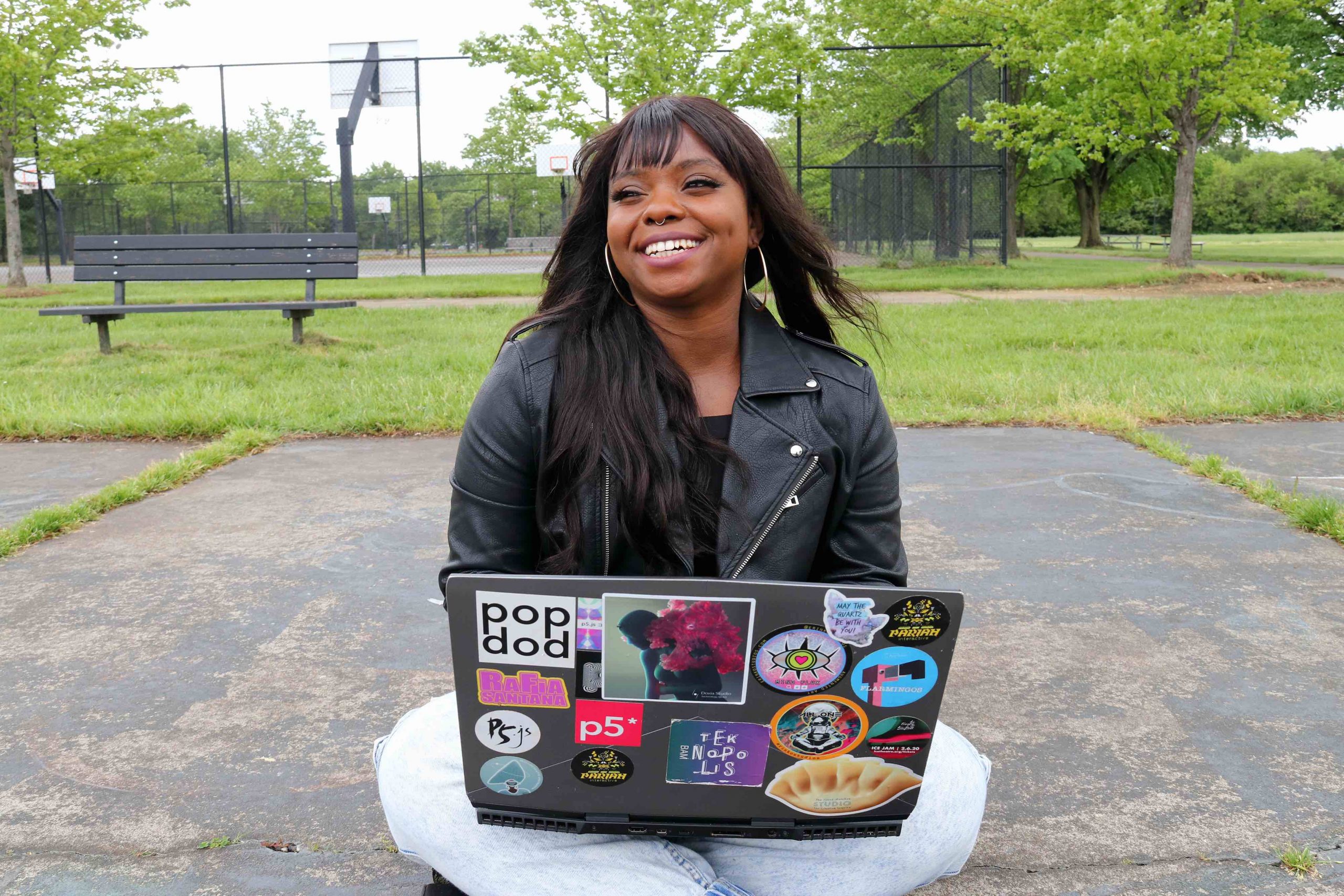LaJuné McMillian’s body of work is evidence that physical movement can become a social movement. Blending their passion for figure skating and immersive media LaJuné’s Black Movement Library (BML) exists as a creative resource for artists and activists—a library of motion capture data from Black performers and character base models. Beyond responding and reclaiming the material in existing movement database, it stands as an archive of Black existence.
We speak with LaJuné about unraveling the appropriative biases inherent in immersive technologies, the importance of skating for themself, and what it means to reframe ‘motion capture’ as ‘motion witnessing.’

You have a background in figure skating. How did that shape your life?
I grew up in New Jersey, and I started skating in third grade. I begged my parents to let me start skating, maybe because I would watch it on TV with my nana, and I thought it was a beautiful sport. I had my ninth birthday at the ice rink, and then after that, I took lessons.
I’m starting to process what it means to have grown up in such a white space. I grew up in a predominantly white school, but I have friends from various backgrounds. It was not a good time, and I was depressed all the time.
I kept skating, and one good part about skating was that I didn’t have to go to school. I could be quiet and do me. But then some of those other perks of being in a different community on the ice came with its politics.
How did you get to merging art and technology?
I thought that I wanted to become an engineer. I went to what was then called NYU Polytech, which is now NYU Tandon School of Engineering. New York was stressful. School was a traumatic experience being there. I would get comments like, “Oh, you don’t look like you should go here.” By the end, I was like, “I don’t know why I’m here either.”
I switched my major in my sophomore year. That whole year it was mind-opening because I didn’t know that you could make work art with technology. Also, it was very overwhelming because we were learning so many technologies at one time. So it was like learning 3D modeling, 3D animation, video editing and creation softwares, creative coding, installation classes, game design, physical computing, virtual reality, motion capture.
I’d come from thinking that you could have a career in one thing, and you’d have to learn one thing. I realized that no, that’s not the only available path. You can build, and craft a route of your own if you try to figure out what you want that to be. I gained the courage to call myself an artist. That’s what I do. That’s who I am.



What are the driving ideas behind Black Movement Library?
I did a residency at both Eyebeam and the Barbarian Group, who wanted me to create a motion-capture performance in their office space. I worked with Jeremiah Johnson, a creative director; Nala Duma, a music producer; and Renaldo Maurice, a dancer with Alvin Ailey.
I thought to do interviews with both Renaldo and Nala. Those interviews were embedded into these sounds peak that you perform. I used my time to do interviews with them, learn more about their movement journeys with their practices. It opened the door for me to realize that I didn’t want my work to be just data. That’s pretty much how data is presented to us—as a list. I realized that I needed to build out a space that was more dynamic, multifaceted—a space that could hold information in various ways, and not through the data itself.



In current motion capture databases, you don’t see how data is recorded. You don’t know who’s the motion capture actor, and you are given the motion capture data to use. That’s a dehumanizing process. When linking this work to the history of what it means to be Black in the United States, I didn’t want to further objectify us through a digital landscape. I didn’t want to be a part of that. I didn’t want to open the door for further exploitation, further erasure, and dilution of Black folks in our culture. There’s enough of that in the world.
It transitioned my thought process from using us as tools to creating a space, to using a space where we can transition the work that we’re already doing into these digital landscapes—to navigate digital spaces to bring our full selves into these digital landscapes. We can define and understand what that fully means and what it means to be protected in these spaces. I realized the performance could serve as a combination of things, it could be held alongside the data so that if people do use that data for their projects, they know where the data is coming from. When they use that data for their projects, they’re not using it in this way that erases who they are…but rather, brings them along with them.

What does it mean to rename and redefine motion capture as ‘motion witnessing’?
I don’t want to capture people, or the likeness of people. That’s not the type of work. But I am interested in witnessing people, in creating an archive of that witnessing work. I’m interested in that witnessing work through different levels.
Through learning about people from how they talk about themselves in their lives—how they move not within performative aspects, how did they move through the world? It’s a way of transitioning my role from this person who is capturing and putting all those captions into this place. And to someone who is taking the violence out of that relationship and working towards that. It can be hard, especially when working with digital technologies with a history of ‘capturing.
The idea that Blackness can’t be captured helped me in a research sense to understand what’s happening to us, our bodies, and how we move through space. We all have a sense of what cultural appropriation is, but sometimes what gets in the way of that conversation is why it is bad? These technologies take away this essence of something to put it into this process of commodification so that you can then sell it to the masses.
That’s really what American culture is today, it’s this violent commodification of various cultures, and that process is linked to colonialism and slavery. So what does it mean to operate outside of that and outside of those terms? It was weird because a large conversation that I was having before I was thinking this way was like, “Maybe I could sell this motion capture data and pay the people who are moving.” But then I was like, “Is that operating within of commodification of somebody’s data?”
I realized I don’t want to participate in that. But I do want to participate in the liberation of Black people. I do want to participate in our collective liberation. I want to participate in the abolishment of systems that perpetuate these situations. When I say Black Movement Library is a library of the future, I am also saying that it needs to operate through a futuristic lens. A future without these systemic oppressions.


What is the importance of physical movement in your daily life and practice?
Coaching is not actually moving, and it’s helping others to move. But I wasn’t taking my own advice, and I wasn’t taking my own lessons. So I had stopped moving for such a long time, and I didn’t realize how much that was connected to trauma or how much connected to everything that had happened—all of the other things that were piled up through that college experience. So I was doing this work to make this movement library, but I wasn’t moving.
For such a long time, the performance work that I was doing was featuring other dancers and not me. Deneane Richburg’s work inspired me because I’d never seen a Black skater looking at skating through a critical lens. And I feel like it’s so needed, especially for folks who have gone through this process of being a skater in a sport that can be very discriminatory depending on where you are in the skating world. So to find another skater who is looking at skating through this lens was really amazing to me.
That inspired me to reconnect with my movement practice and journey. It told me that I needed to do that, to show up better for this work. Now, I take lessons, and it feels so good to skate again. Not to go to the Olympics, not to do any competing, but to skate for myself. Brownbody hosts these transformational residencies. It’s been a group of Black skaters, and us really deep healing, and necessary movement work, and reconnecting to our bodies differently. My skating life is a refuge for me.


You’ve talked about how it’s a dream to develop an alternative to biased immersive technologies one day.
I want to launch the website this summer. It will have to be various round tables with the folks that I’ve been working with. To see how they’ll feel comfortable with me maybe sharing, not sharing. People were seeing, viewing, how do people engage with this information.
I’m turning the workshop into an online workshop that will include the movement portraits and the community-based aspects of the library work. Two years from now, I see the Black Movement Library as an actual library. So a library that you can go to, and engage with all the various research that has gone into this, the books, the readings. And also access to the technology.
I’m creating a library of technology. I’m hoping to get more access to motion capture technologies, various motion capture technology. I’m hoping to get more access and hands-on access to all of these tools to put into this library so that folks who don’t have access can go to this place and make something. If you don’t have a real relationship with a handful of powerful institutions, it is really hard to get your hands on these tools.
Through having access to these tools, the research, and all of the information through the layers of how it comes, they’ll be able to make tools if they want to too. So it’s not me thinking up and dreaming, but other folks having agency in that space as well, having the power to do that too. Hopefully, I can build the library as an institution that can support that and be a space to cultivate new tools together. It will be a space of convening.


What do you hope people get out of the movement portraits you’ve created?
With the movement portraits, it’s a way to share more information on the folks contributing their Movements to the library space. How do we find ways to humanize and also virtualize this process of data collection? They’re pretty dynamic in how they’re made. They’re first seen as a live performance, even with this recording of motion capture or motion witnessing in real-time. So they’re seeing this real-time motion witnessing data collection space. They’re basically invited into this process. Also, in that performance, they’re seeing these live visuals that I’m creating with Unreal Engine, and basically, I’m creating visually abstract projected experiences based on their movements.
In the audio, they’re listening to the interviews spread throughout the actual space. I created two 10-minute videos from those performances. What I find interesting about these video works is that you don’t know, straight on, that they are from a live performance when you look at them. So this is the data from that performance, but I’m re-representing them as this sort of 2D video experience. So it doesn’t directly reference the performance. So if you didn’t know that the motion capture data was recorded and all the stuff that happened during those performances, you would think that you are looking at this movement portrait through this different medium.
I’m interested in the transition between live medium versus video… a medium like VR. And how to create an experience for each platform, that is, for each medium, specifically. How do I retell the story through this medium? How do I virtualize that experience? How do I form this in a process that allows me to reconnect to the people I’m working with even if it is recorded from them?


I want to keep movement portraits multi-medium, mainly because I want to make work that can reach multiple people, who have access to multiple tools, not everyone has access to VR. Making a VR piece, even if it’s 360 video, I feel like it sometimes can leave people out of the conversation. The people I want to get to are the people that I talk to, which I don’t want to do. I want to always work on ways to open the door wider.
I want that video to be an immersive experience too. I’m hoping that as I get more momentum, more resources, that I can give some of this work to other artists to make movement portraits. I hope that I’m bringing more Black folks into those spaces for all of us to work together.
Credits
Photography by Yodith Dammlash.





